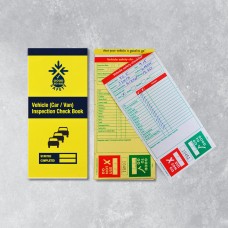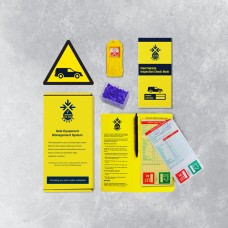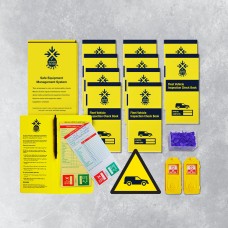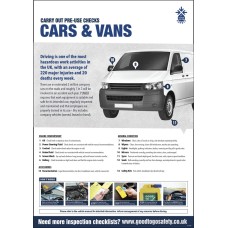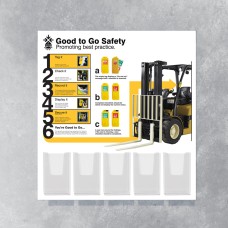Vehicle (Car & Van) Inspections - Workplace Inspection Checklists
Driving may be one of the most hazardous working activities in the UK
The government’s Work-Related Road Safety Task Group estimates that up to a third of all road traffic accidents involve someone who is at work at the time. This may account for over 20 fatalities and 250 serious injuries every week.
Managing the risks to employees who drive at work requires more than just compliance with road traffic legislation. The Health and Safety at Work etc Act 1974 requires employers to take appropriate steps to ensure the health and safety of their employees and others who may be affected by their activities when at work. This includes the time when they are driving or riding at work, whether this is in a company or hired vehicle, or in the employee's own vehicle. There will always be risks associated with driving. Although these cannot be completely controlled, an employer has a responsibility to take all reasonable steps to manage these risks and do everything reasonably practicable to protect people from harm in the same way as they would in the workplace.

Road deaths and serious injuries in the UK, through 2021 alone accounted for 1,608 deaths and 26,701 serious injuries according to Brake, the road safety charity, so any steps that can be taken to help reduce those statistics should be given serious consideration.
The lists below are practical considerations for employers.
Drivers should be:
1. competent and capable of doing their work in a way that is safe for them and others;
2. properly trained;
3. sufficiently fit and healthy to drive safely and not put themselves and others at risk;
4. provided with information that will help them reduce risk (eg recommended tyre pressures);
5. provided with appropriate advice on driving posture.
Vehicles should be:
1. fit for the purpose for which they are used;
2. maintained in a safe condition and fit for the road.
Journey planning should:
1. take account of appropriate routes;
2. incorporate realistic work schedules;
3. not put drivers at risk from fatigue;
4. take sufficient account of adverse weather conditions.
Good to Go Safety provide a fleet vehicle safety inspection checklist, designed to encourage drivers to carry out essential pre-use vehicle safety inspections checks of their car or van prior to a journey. These walk round check sheets can be built into a fleet management policy and help to ensure the safety of the vehicle whilst reducing maintenance costs. This system helps employers meet their legal duty of care to ensure the safety of staff whilst they work, in accordance with various separate laws governing occupational driving including The Health & Safety at Work Act 1974, PUWER & The Road Traffic Act 1998.
The introduction of a systematic vehicle maintenance and safety programme allows fleet managers to receive a signed and dated vehicle inspection checklist which can be used as evidence of an active and up-to-date maintenance programme in the event of an accident. Some of the basic vehicle checks covered in the book include the engine department for oil, screen wash, battery etc; whilst lights, mirrors, tyres and documentation are amongst the various external checks and it even includes details on the driver to ensure their license is in date and that they are fit to drive – all of which can be seen to cover many of the considerations listed above in one simple and affordable solution.
Fleet Vehicle (Car / Van) Inspection Books - 25 Checklists
PUWER requires that work equipment is suitable and safe for its intended use, regularly inspected an..
£6.20
Fleet Vehicle (Car / Van) Inspections - Weekly Checklist Kit
PUWER requires that work equipment is suitable and safe for its intended use, regularly inspected an..
£37.10
Fleet Vehicle (Car / Van) Inspections - Daily Checklist Kit
PUWER requires that work equipment is suitable and safe for its intended use, regularly inspected an..
£109.50
Fleet Vehicle (Car / Van) Poster - Visual Inspection Checklist
Our car / van safety poster has been designed to highlight key components of a standard car or van a..
£21.77
Inspection Information Station
The information station will provide your workplace with the ideal central location to store inspect..
£233.20
Inspection Wallet and Pen
A handy wallet that not only provides additional protection from the elements but also gives inspect..
£6.20
Weather Resistant Inspection Holder
These industrial strength pockets have a press seal fastening to keep important documents clean and ..
£6.31
Inspection Book Dispenser
Allow the storage of checklists in a central location for quick and easy access to important inspect..
£13.25

